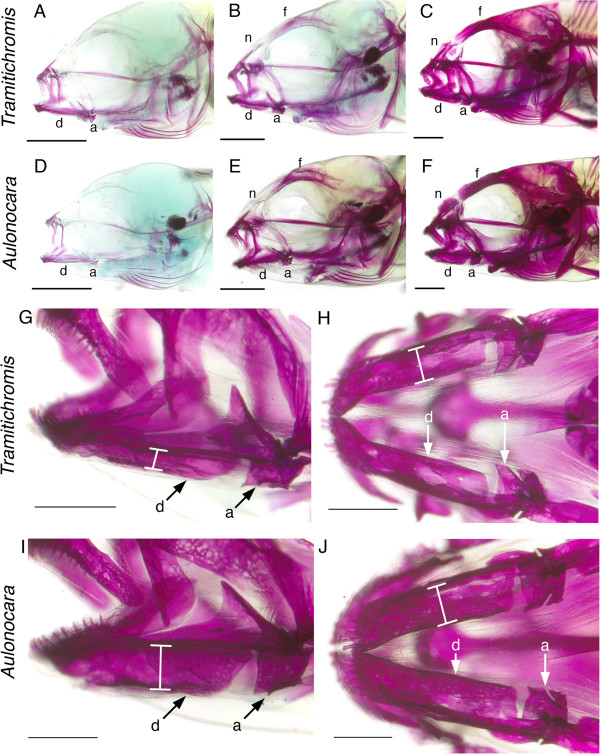Figure 9.

Bone ossification in cleared and stained larval and juvenile Tramitichromis sp. and Aulonocara stuartgranti. Overall developmental sequence is similar in Tramitichromis sp. (A-C) and Aulonocara stuartgranti (D-F; lateral views, rostral to the left). Early larval development (A, D; 9 mm SL) showing ossification in jaws and opercular region. The dentary (d) and anguloarticular (a) bones are ossified in both species, but the SO canal is not yet ossified. Older larvae (B, E; 11.5 mm SL) show ossification spreading to the otic and orbital regions. The frontal (f) and nasal (n) bones are weakly ossified, and the dentary and anguloarticular bones are strongly ossified. Juveniles (C, Tramitichromis, 14 mm SL; F, Aulonocara, 16 mm SL) show ossification throughout the cranium. Close ups (G-J) of specimens in C and F illustrate the MD canal in lateral (G, I) and ventral (H, J) views (rostral to the left). Note that the canals are wider in Aulonocara than in Tramitichromis (white brackets). Scale bars: A-F = 1.0 mm, G-J = 0.5 mm. MD, mandibular canal; SO, supraorbital canal.
